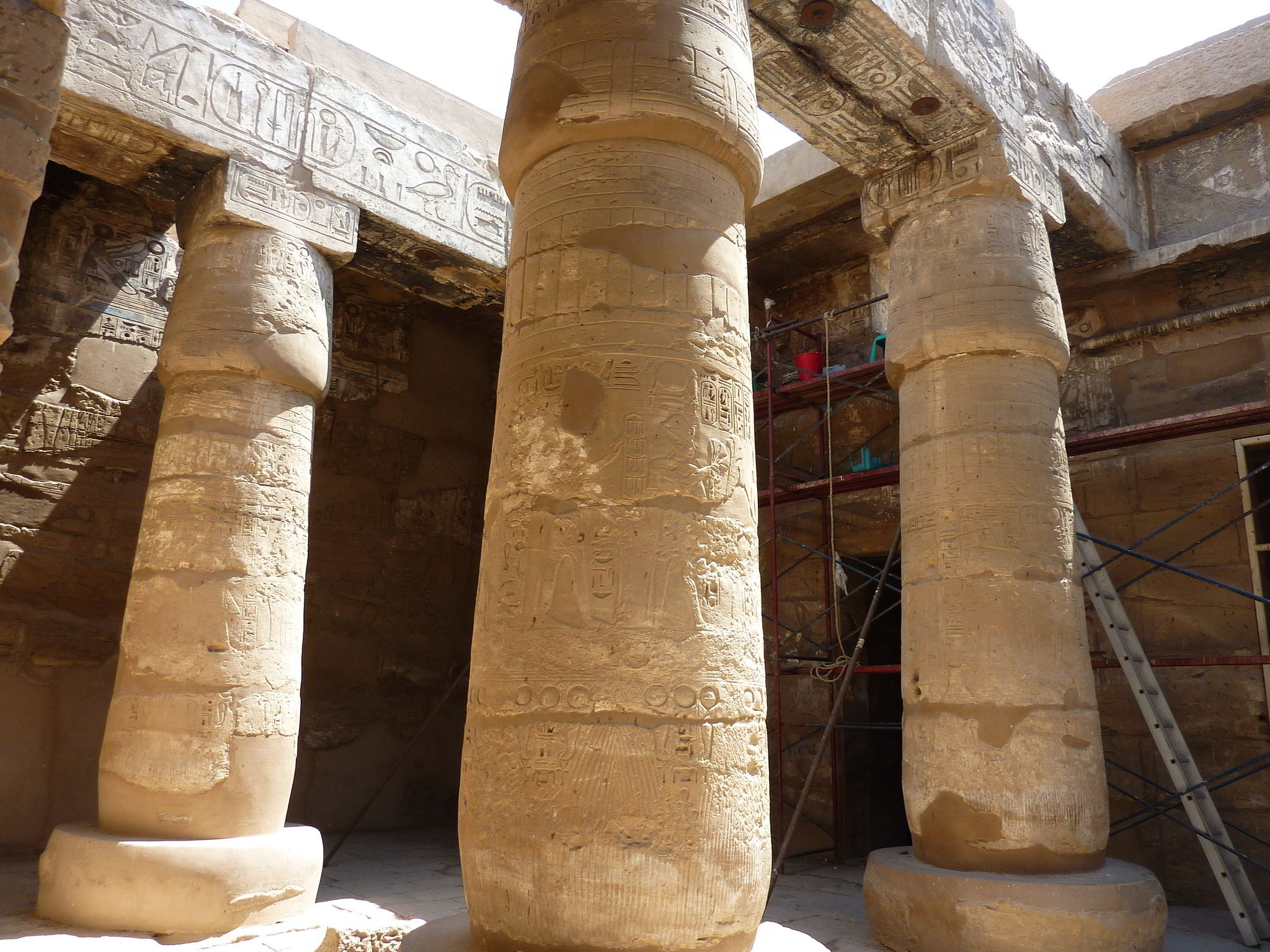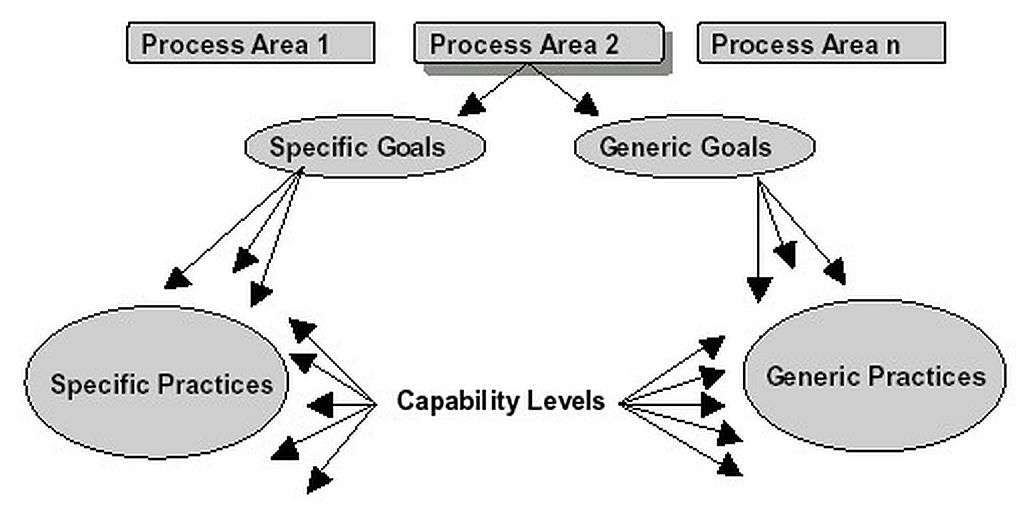CMMI Model Foundation — What is it?
CMMI Model Components
The Capability Maturity Model Integration is a process framework to develop, optimise, and assess organisational processes.CMMI models provide guidance to develop processes — they are not themselves processes or process descriptions — the actual processes used in an organisation depend on many factors, including application domain(s): and organisation structure and size. Rather, CMMI contains and is defined from a framework, the so-called CMMI Model Foundation (CMF).
This foundation is the common fundament of each CMMI model resp. each CMMI constellation. It is the core common to all constellations. It consists of 16 common process areas and all generic goals and practices.
Thus, CMMI models represent different fields of bodies of knowledge: systems engineering, software engineering, integrated product and process development, ITIL, CobIT, etc.
The CMF provides the ability to generate multiple models for specific application domains and associated training and appraisal materials.
Model components within the CMMI framework are divided into three categories:
- Required model components,
- Expected model components, and
- Informative model components.
In addition, the CMMI model foundation supports creating materials for training and appraisal for the different kinds of CMMI models.
Required Model Components — Goals and Practices
Required model components are goals which have to be achieved by all circumstances. These can be either specific or generic goals.
Specific goals and practices are specific to certain process areas. Generic goals and practices are a part of every process area.
Specific goals and practices are stated for each of Process Area individually.
Their specific existence in an organisation determines whether the processes are realised, ie. done in daily work, or not.
For example, the specific goals and practices of the process area Requirements Management (REQM) are:
Specific Goal 1 (SG 1): Manage Requirements:
- Specific practice 1.1 (SP 1.1): Obtain an Understanding of Requirements.
- Specific practice 1.2 (SP 1.2): Obtain Commitment to Requirements.
- Specific practice 1.3 (SP 1.3): Manage Requirements Changes.
- Specific practice 1.4 (SP 1.4): Maintain Bidirectional Traceability of Requirements.
- Specific practice 1.5 (SP 1.5): Identify Inconsistencies Between Project Work and Requirements.
The characteristics of specific goals and practices define in process maturity appraisals, the minimal capability level that the according processes are really done at the workplace — in other words, the existence of specific goals and practices is mandatory to satisfy a certain process area.
Generic goals and practices hold for all process areas of each CMMI constellation.
Generic Goal 1 (GG 1): Achieve Specific Goals.
- Generic Practice 1.1 (GP 1.1): Perform Specific Practices.
Generic Goal 2 (GG 2): Institutionalise a Managed Process.
- Generic Practice 2.1 (GP 2.1): Establish an organisational Policy.
- Generic Practice 2.2 (GP 2.2): Plan the Process.
- Generic Practice 2.3 (GP 2.3): Provide Resources.
- Generic Practice 2.4 (GP 2.4): Assign Responsibility.
- Generic Practice 2.5 (GP 2.5): Train People.
- Generic Practice 2.6 (GP 2.6): Manage Configurations.
- Generic Practice 2.7 (GP 2.7): Identify and Involve Relevant Stakeholders.
- Generic Practice 2.8 (GP 2.8): Monitor and Control the Process.
- Generic Practice 2.9 (GP 2.9): Objectively Evaluate Adherence.
- Generic Practice 2.10 (GP 2.10): Review Status with Higher Level Management.
Generic Goal 3 (GG 3): Institutionalise a Defined Process.
- Generic Practice 3.1 (GP 3.1): Establish a Defined Process.
- Generic Practice 3.2 (GP 3.2): Collect Improvement Information.
Generic Goal 4 (GG 4): Institutionalise a Quantitatively Managed Process.
- Generic Practice 4.1 (GP 4.1): Establish Quantitative Objectives for the Process.
- Generic Practice 4.2 (GP 4.2): Stabilize Sub process Performance.
Generic Goal 5 (GG 5): Institutionalise an Optimizing Process.
- Generic Practice 5.1 (GP 5.1): Ensure Continuous Process Improvement.
- Generic Practice 5.2 (GP 5.2): Correct Root Causes of Problems
General goals define how far an organisation is mature to perform its processes on a certain level of process capability:
| Capability level | Practices implemented |
| 0 - Incomplete | The specific practices are not fully implemented. |
| 1 - Performed | The specific practices for a given process area have been implemented, that is generic goal 1 has been achieved. |
| 2 - Managed | Generic goal 2 (GG 2) Institutionalise a Managed Process, is implemented. Note the levels are incremental, that is they build on each other so level 2 implies level 1 and level 2. |
| 3 - Defined | Generic goal 3 (GG 3) Institutionalise a Defined Process, is implemented. |
| 4 - Quantitatively Managed | Generic goal 4 (GG 4) Institutionalise a Quantitatively Managed process, is implemented. |
| 5 - Optimizing | Generic goal 5 (GG 5) Institutionalise an Optimizing process, is implemented. |
General goals are related to maturity level and capability level in the staged representation and the continuous representation, respectively. By this, they indicate the level of institutionalisation of process areas.
These model components are also required and the described characteristics must be present in order to institutionalize process areas. As long as one of the goals for a certain maturity level is not achieved the corresponding level cannot be considered as achieved.
Expected Model Components
Expected model components can be specific and generic practices. These practices support the achievement of the required model components and are therefore directly associated to one goal. They describe activities which are expected to result in the achievement of the associated goal. Nevertheless, it is permitted to achieve the goals using activities different from the ones described in the practices, as long as they satisfy the need of achieving the goals.
Informative model components
The informative model components are neither expected nor required. However, they properly support a CMMI introduction and are of great help when it comes to interpreting required and expected model components. Examples of informative model components are references pointing to more detailed information in a related process area or generic practice elaborations which provide guidance on how to apply a generic practice to a process area.
Further Readings
- Introduction to the Architecture of the CMMI Framework. July 2007. Technical Note CMU/SEI-2007-TN-009. (PDF, 210 KB)
- CMMI Process Areas. CMU/SEI
- CMMI for Development version 1.2
- Kneuper R.: CMMI Verbesserung von Software Prozessen mit Capability Maturity Model Integration, Springer, 2006.








Leave A Comment